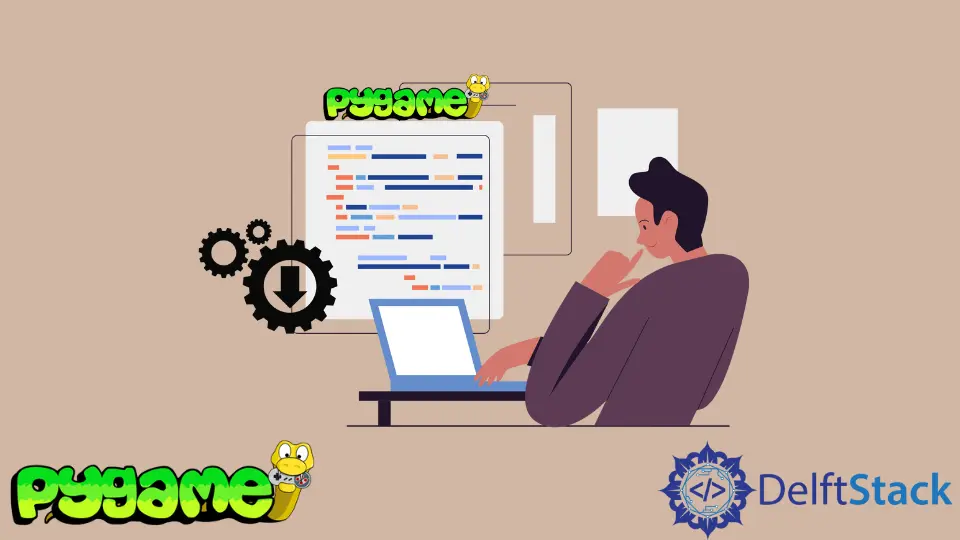How to Install Pygame for Python 3.5/3.11
- Prerequisites
- Installing Pygame Using pip
- Installing Pygame from Source
- Troubleshooting Common Installation Issues
- Conclusion
- FAQ

Installing Pygame can be an exciting step towards creating your own games using Python. Whether you’re a beginner or an experienced developer, Pygame provides a robust framework for game development.
This tutorial is designed to guide you through the process of installing Pygame for Python versions 3.5 and 3.11. By the end of this article, you’ll have Pygame up and running on your machine, ready for your game development adventures. So, let’s dive in and get started!
Prerequisites
Before we jump into the installation, there are a few prerequisites to check off your list. First, ensure you have Python 3.5 or 3.11 installed on your machine. You can download the appropriate version from the official Python website. Additionally, having a package manager like pip is essential, as it simplifies the installation of Pygame. If you’re unsure whether pip is installed, you can check by running a simple command in your terminal.
To verify your Python installation, use the following command:
python --version
Output:
Python 3.5.x or Python 3.11.x
If you see the version number, you’re good to go!
Installing Pygame Using pip
One of the most straightforward methods to install Pygame is through pip, Python’s package installer. This method is quick and efficient, allowing you to get started with Pygame in just a few minutes.
To install Pygame, open your terminal and type the following command:
pip install pygame
Output:
Collecting pygame
Downloading pygame-2.x.x-cp35-cp35m-win_amd64.whl (...
Installing collected packages: pygame
Successfully installed pygame-2.x.x
This command tells pip to download and install the latest version of Pygame compatible with your Python installation. If you’re using Python 3.11, pip will automatically fetch the version that matches.
Once the installation is complete, you can verify it by running a simple Python script to check if Pygame is imported successfully. Open a Python shell and enter the following:
import pygame
print(pygame.ver)
Output:
(2.x.x, 'Pygame version')
If you see the version number, congratulations! You have successfully installed Pygame.
Installing Pygame from Source
If you prefer more control over the installation process or want to customize the build, you can install Pygame from the source. This method is slightly more involved but allows for greater flexibility.
First, you need to clone the Pygame repository from GitHub. Open your terminal and run the following command:
git clone https://github.com/pygame/pygame.git
Output:
Cloning into 'pygame'...
remote: Enumerating objects: ..., done.
remote: Counting objects: ..., done.
remote: Compressing objects: ..., done.
Receiving objects: ..., done.
After cloning the repository, navigate into the Pygame directory:
cd pygame
Now, you need to build and install Pygame. Run the following commands:
python setup.py build
python setup.py install
Output:
Building Pygame...
Installing Pygame...
Successfully installed Pygame
This process compiles Pygame from the source code, ensuring that you have the latest features and updates. After the installation, you can verify it in the same way as before by importing Pygame in Python.
Troubleshooting Common Installation Issues
Sometimes, you may encounter issues during installation. Here are some common problems and their solutions:
-
Pip Not Found: If you receive an error stating that pip is not recognized, you may need to install it separately. You can find instructions on the official Python website.
-
Version Compatibility: Ensure that you’re using a compatible version of Python. Pygame may not support very old or very new versions.
-
Missing Dependencies: If you face issues related to missing libraries, you may need to install additional dependencies. Check the Pygame documentation for a list of required libraries.
-
Permission Errors: If you encounter permission errors, try running the installation command with administrative privileges.
By following these troubleshooting tips, you can resolve common installation problems and successfully set up Pygame.
Conclusion
Installing Pygame for Python 3.5 or 3.11 is a straightforward process that opens up a world of possibilities in game development. Whether you choose to install it via pip or from the source, the steps outlined in this tutorial will guide you through the process seamlessly. With Pygame installed, you can start creating your own games and explore the exciting world of game development. Happy coding!
FAQ
- What is Pygame?
Pygame is a set of Python modules designed for writing video games. It provides functionalities such as graphics, sound, and input handling.
-
Can I use Pygame with Python versions other than 3.5 and 3.11?
Yes, Pygame is compatible with several Python versions, but it’s best to check the official documentation for specific version support. -
Do I need to have prior programming experience to use Pygame?
While prior programming experience can be helpful, Pygame is beginner-friendly and comes with extensive documentation to assist newcomers. -
Where can I find Pygame documentation?
The official Pygame documentation is available on the Pygame website, providing tutorials, examples, and API references. -
Can I install Pygame on macOS and Linux?
Yes, Pygame is cross-platform and can be installed on macOS and Linux using similar methods.
I am Fariba Laiq from Pakistan. An android app developer, technical content writer, and coding instructor. Writing has always been one of my passions. I love to learn, implement and convey my knowledge to others.
LinkedIn